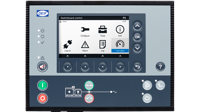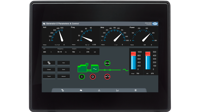Custom DEIF devices combine AC and DC busbars in hybrid solution for fishing
Two new fishing vessels will soon be plying their trade in Norway, energised by an innovative hybrid solution with AC and DC busbars. A custom engineered DEIF control system is handling energy management and contributing to the energy transition at sea.
*English subtitles are available
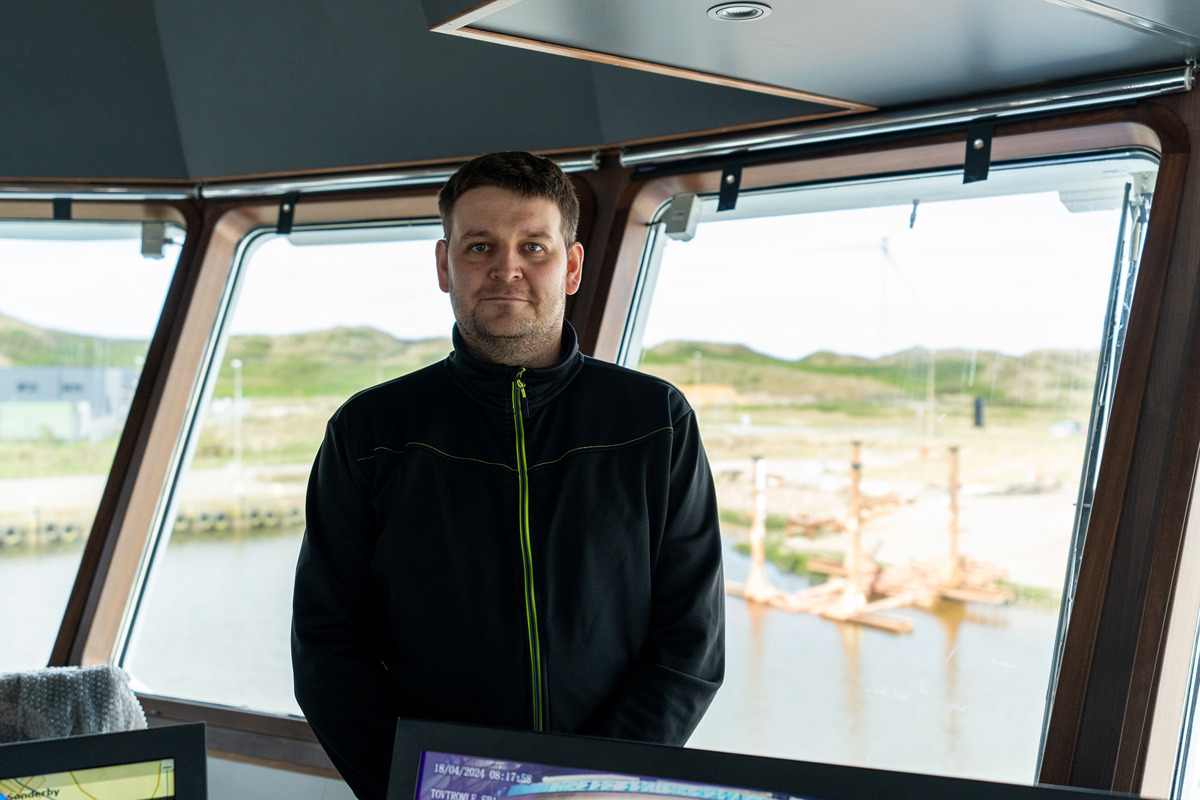
Fishing has always been important in Hvide Sande – and so has shipbuilding. For decades, the small town on the North Sea in western Denmark has been home to skilled shipbuilders, and that tradition continues to this day. But the fishing industry is changing, and that change is felt in the shipbuilding industry, too.
“In recent years, shipbuilding has changed a lot,” says Nicolai Johansen, partner and project manager at Vestværftet, a local shipyard. “Today, it’s very important for shipowners to have a green profile and run their vessels relatively inexpensively. They ask for green solutions and new ideas, and we’re working on how we can optimise vessels.”
Vestværftet has decades of experience building fishing vessels of all shapes and sizes to customers all over north-western Europe. We paid a visit to the shipyard on a bright April morning to find examples of new ideas – and we weren’t disappointed.
Hybrid power and two busbars
On the day of our visit, Vestværftet are busy completing two new fishing vessels for Norwegian shipowners: the 39-metre Aksel Johan and the 21-metre Ingeborg. Both are hybrids with batteries, shaft generators, and shore power connections – and both have an AC and a DC busbar. This combination provides several advantages according to Jesper Spørring, co-owner and electrical engineer at installation company Vest-El who handle electrical installations for Vestværftet.
”We need to have an AC busbar because it powers all regular consumers on board such as chargers and lighting,” he explains. “But when you have a big electric thruster which needs to run at variable speed, it’s an advantage to run it from the DC side.”
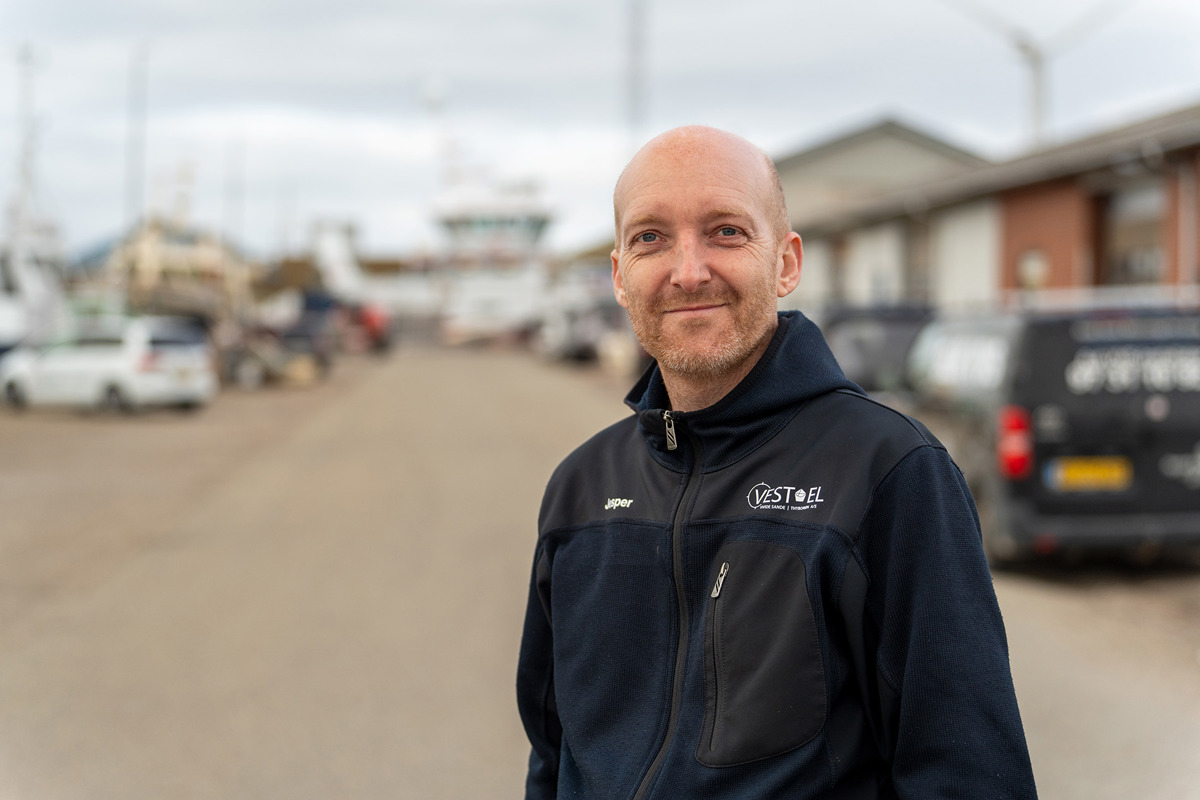
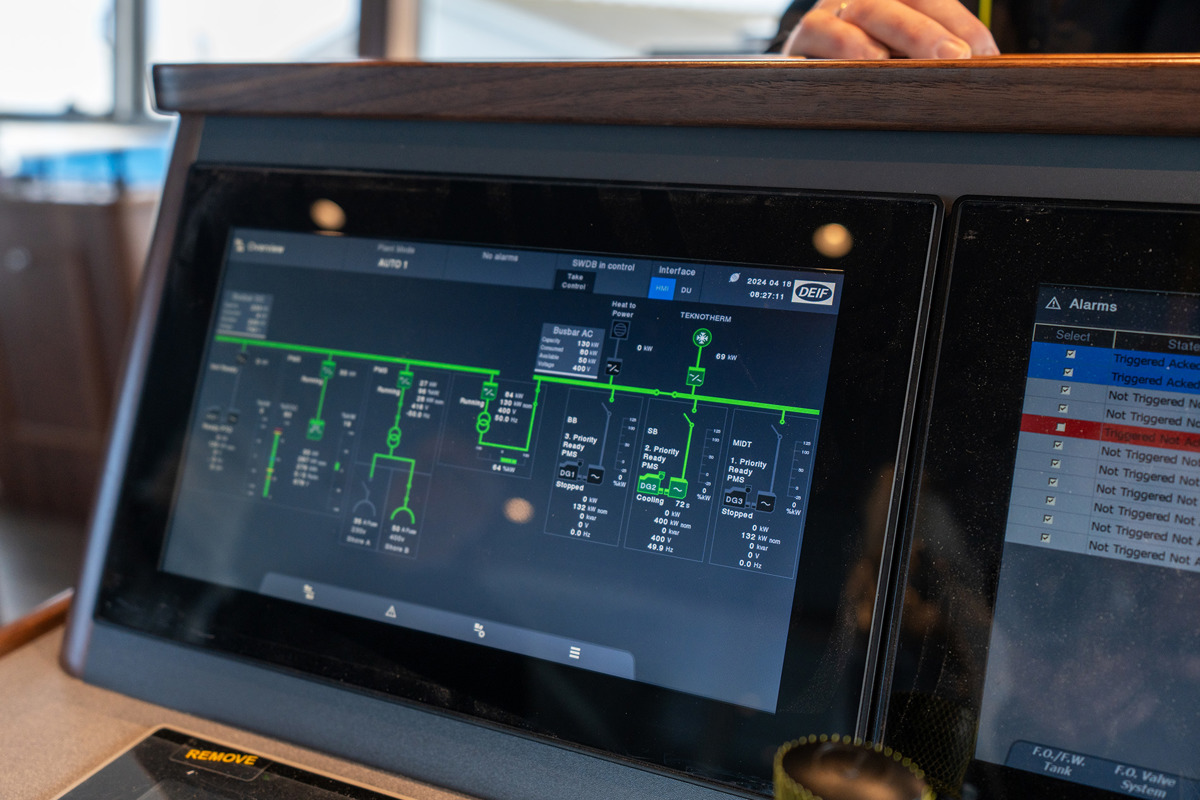
The AC busbar is powered by diesel gensets (one on the Ingeborg, three on the Aksel Johan) while the DC side gets its energy from the shaft generator, battery pack, and shore power connection. The battery can help run the diesel generators in the most power-efficient way, and Jesper Spørring lists some other possibilities that crews will get with the combination of two busbars and several energy sources.
“It allows the crews to run with less generator capacity because they can do peak shaving with the batteries,” he says. “The captain can use the shaft generator no matter how many RPM the main engine is doing, and he can use it for power take-in. If the main engine should fail, this functions as a take-me-home solution that sails them back home.”
A lot of options, to be sure, but how do you control such a flexible system? For Vest-El, the choice was easy: They contacted DEIF for a solution.
Custom solution with user-friendly interfaces
For both ships, DEIF delivered a custom engineered energy management system based on the PPM 300 controller. It handles all aspects of hybrid propulsion, controlling all energy sources and breakers, the inverters on both buses, and the power distribution between the buses (AC and DC). The controllers are interconnected to enable redundancy, coordination, and control.
The crew can monitor and operate each controller on its local display, and they can get an overview of the system from AGI 415 touch screens in the switchboard and on the bridge. These interfaces also allow the crew to easily adjust system parameters. Jesper Spørring describes the system and the AGI 415s as “very user-friendly”; a factor that led Vest-El to select the AGI displays for an additional application.
”We’ve chosen to use the DEIF screens for our own integrated alarm system,” he says. “We’ve been through various products, and we chose the DEIF AGIs because the price was advantageous, and because our programmers found them easy to work with. Plus, it looks good on the bridge because it’s the same screen that DEIF is using, so we’ve got them sitting next to each other.”
Direct communication and mutual understanding
For both the shipyard and the electrical contractor, working with DEIF was a success thanks to direct and efficient communication, quick solutions, and timely support.
”It’s important to us to have direct communication and an understanding of each others’ systems and situations,” comments Nicolai Johansen. “The cooperation between us, Vest-El, and not least DEIF has been really good. There have been no major challenges because we’ve done it together.”
”When we work with DEIF on a power management system, we’re sure that we’re getting the right solution,” adds Jesper Spørring. “They help us with documentation requirements, technical solutions, and specific customer requirements. The programmers and technicians they’ve sent have been easy to work with and super flexible – even if we need to take them on a sea trial because we need to investigate something. DEIF is a reliable partner who always pick up the phone, even if you’re stuck on a challenge on a dark evening.”
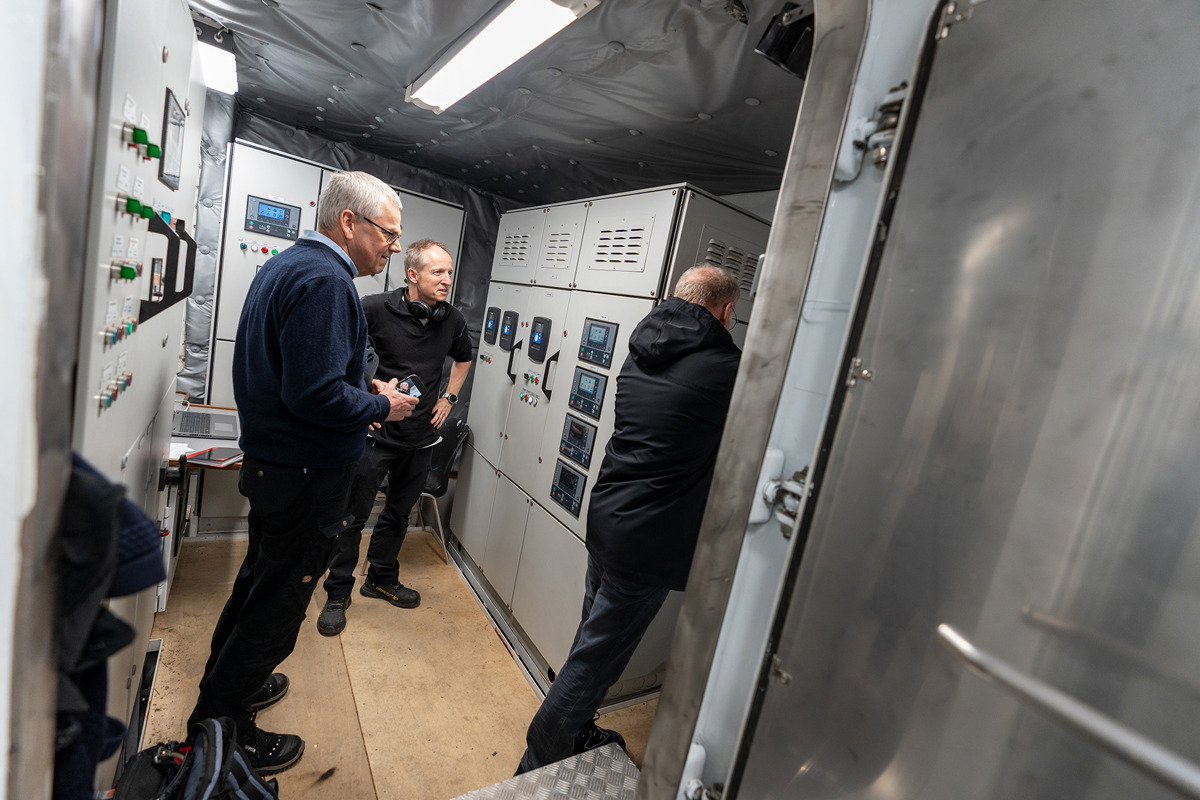
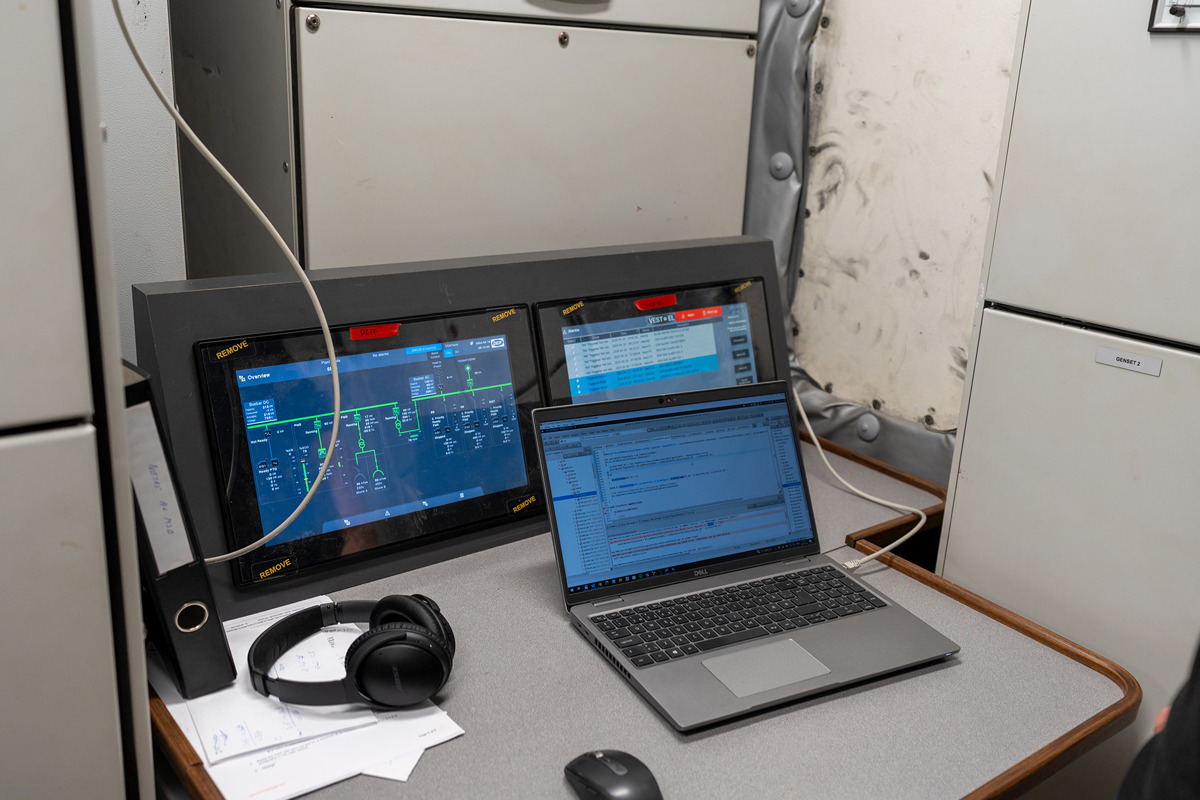
“Nothing but our warmest recommendations”
The Aksel Johan and the Ingeborg will soon play a significant role in Norway’s fishing fleet: The country has committed to becoming a low-emission society by 2050 . All sectors must contribute, including the fishing fleet. Even though hybrid solutions still cannot power all fishing operations, the technology can reduce fuel and energy consumption during other manoeuvres and contribute to the energy transition.
”Hybrid propulsion has not made a complete breakthrough in fishing yet, but work is being done on that,” says Nicolai Johansen. “The technology is in demand, and we’re working hard to develop something that can be used for fishing; at least during certain phases of fishing.”
DEIF solutions and support are helping Vestværftet and Vest-El introduce innovative ideas and solutions that play a role in this transition. ”In recent years, we’ve seen new solutions from DEIF through Vest-El, and we’ve been very happy with them,” says Nicolai Johansen. “We see good opportunities for development with both DEIF and Vest-El.”
Jesper Spørring, too, is satisfied with the products and service his company is getting from DEIF.
“We can give them nothing but our warmest recommendations,” he concludes
Vest-El A/S
Founded: 2012
Headquarters: Hvide Sande, Denmark
Activities: wide range of electrical solutions for consumer, industrial, and maritime applications
Employees: approx. 50
Web: www.vest-el.dk
DEIF devices used:
Custom engineered PPM 300 protection and
power management controller
-
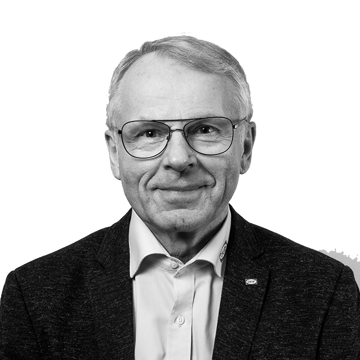
Contact us to discuss your options
- 90 years of energy pioneering
- Manufactured at the highest standards
- Superior quality
- Unmatched service and support
- Made in Denmark

